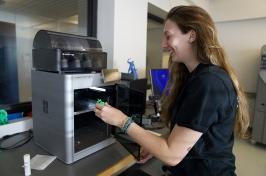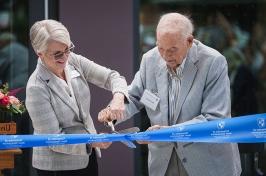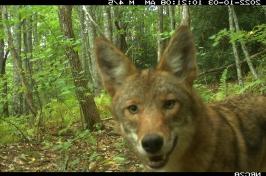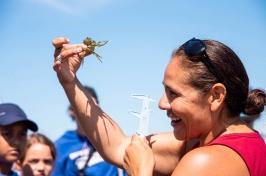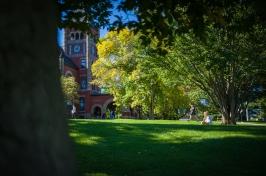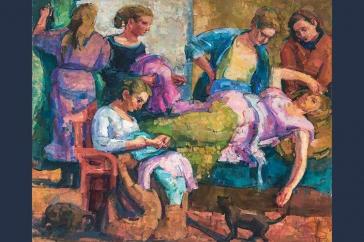
New Hampshire by Race and Hispanic Origin, 2020. (Credit: UNH Carsey School of Public Policy)
 New Hampshire is becoming a more diverse state, with children at the forefront of the demographic changes in the past decade, according to a new analysis from the New Hampshire Agricultural Experiment Station and the UNH Carsey School of Public Policy.
New Hampshire is becoming a more diverse state, with children at the forefront of the demographic changes in the past decade, according to a new analysis from the New Hampshire Agricultural Experiment Station and the UNH Carsey School of Public Policy.
Station researcher Kenneth Johnson, senior demographer for the Carsey School and an Andrew Carnegie fellow, said the Granite State’s population grew by a modest 4.6 percent during the past decade to 1,377,500 in April 2020. In contrast, the number of minority residents, defined as those who were other than non-Hispanic Whites, increased by 74.4 percent to 176,900 in 2020.
Minority residents now represent 12.8 percent of the state’s population compared to 7.5 percent (101,400) in 2010. Though the minority population grew, a substantial majority of the state’s population remains non-Hispanic White. In all, 87.2 percent of state residents (1,200,600) reported to the Census Bureau that they were White alone and not of Hispanic origin on the 2020 Census. This is 14,400 fewer than in 2010.
“New Hampshire’s population became more diverse because the minority population grew, while the non-Hispanic White population did not. Though racial-ethnic diversity is increasing in New Hampshire, it remains significantly less diverse than the nation, which is 42.2 percent minority. Only three states have a less diverse population than New Hampshire,” Johnson said.
Hispanics are the largest minority population in New Hampshire with 59,500 residents, or 4.3 percent of the population. The non-Hispanic Asian population is 35,600 (2.6 percent), and non-Hispanic Blacks number 18,700 (1.4 percent). These groups each had significant population gains between 2010 and 2020. The largest population gain was among multiracial non-Hispanic residents, who at 54,600, now represent 4 percent of the state. The population reporting that they were Native American or of “some other race” also increased; together, these two groups now represent 0.6 percent of the state’s population.
Children are at the leading edge of the state’s growing diversity. In all, 20.2 percent of New Hampshire’s under age 18 population belonged to a minority group in 2020, with Hispanics, Asians, and those of two or more races representing the largest shares. The greater diversity among children is the result of two diverging trends. The minority child population grew by 16,800 (47.9 percent) between 2010 and 2020.
In contrast, the non-Hispanic white child population declined by 47,200 (-18.7 percent). Because the minority youth gain was not sufficient to offset the non-Hispanic White loss, New Hampshire’s child population declined by 30,400 (10.6 percent). By comparison, the proportion of the adult population that is minority is considerably smaller than among children, at 11.1 percent in 2020.
“Racial-ethnic diversity is geographically uneven in New Hampshire, with the most diverse populations concentrated in the Manchester–Nashua urban corridor, the Hanover–Lebanon region, and in a few areas on the Seacoast. This pattern is especially evident among children,” Johnson said.
For example, Manchester and Nashua are among the most diverse places in the state. The adult population in Manchester is 22.0 percent minority, and it is 25.9 percent minority in Nashua—both well above the state total of 11.1 percent. Among children, 43.1 percent of the children in Manchester and 45.4 percent of those in Nashua are minority.
“New Hampshire’s growing racial-ethnic diversity, especially among those under age 18, means that youth centered institutions, such as schools and health care providers, have been the first to serve a diverse population. The growing diversity of the state’s youngest residents gives them a greater opportunity to grow up in multiracial and multiethnic communities that will enhance interracial relations, widen friendship networks, and prepare them for life in an increasingly diverse state and nation,” Johnson said.
This material is based upon work supported by the NH Agricultural Experiment Station, through joint funding of the National Institute of Food and Agriculture, U.S. Department of Agriculture, and the state of New Hampshire.
Founded in 1887, the NH Agricultural Experiment Station at the UNH College of Life Sciences and Agriculture is UNH’s first research center and an elemental component of New Hampshire's land-grant university heritage and mission. We steward federal and state funding, including support from the USDA National Institute of Food and Agriculture, to provide unbiased and objective research concerning diverse aspects of sustainable agriculture and foods, aquaculture, forest management, and related wildlife, natural resources, and rural community topics. We maintain the Woodman and Kingman agronomy and horticultural research farms, the Macfarlane Research Greenhouses, the Fairchild Dairy Teaching and Research Center, and the Organic Dairy Research Farm. Additional properties also provide forage, forests, and woodlands in direct support to research, teaching, and outreach.
-
Written By:
Lori Tyler Gula, PhD | NH Agricultural Experiment Station | lori.gula@hwfj-art.com | 603-862-1452















